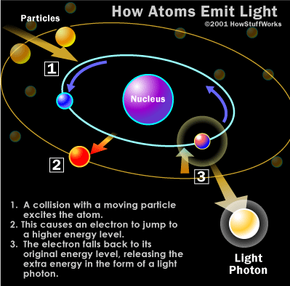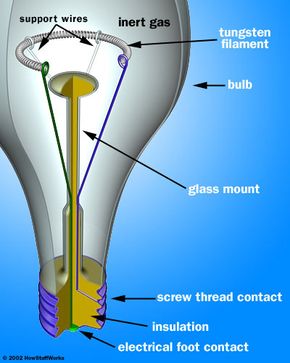Before the invention of the light bulb, illuminating the world after the sun went down was a messy, arduous, hazardous task. It took a bunch of candles or torches to fully light up a good-sized room, and oil lamps, while fairly effective, tended to leave a residue of soot on anything in their general vicinity.
When the science of electricity really got going in the mid 1800s, inventors everywhere were clamoring to devise a practical, affordable electrical home lighting device. Englishman Sir Joseph Swan and American Thomas Edison both got it right around the same time (in 1878 and 1879, respectively), and within 25 years, millions of people around the world had installed electrical lighting in their homes. The easy-to-use technology was such an improvement over the old ways that the world never looked back.
Advertisement
The amazing thing about this historical turn of events is that the light bulb itself could hardly be simpler. The modern light bulb, which hasn't changed drastically since Edison's model, is made up of only a handful of parts. In this article, we'll see how these parts come together to produce bright light for hours on end.
Light Basics
Light is a form of energy that can be released by an atom. It is made up of many small particle-like packets that have energy and momentum but no mass. These particles, called light photons, are the most basic units of light. (For more information, see How Light Works.)
Atoms release light photons when their electrons become excited. If you've read How Atoms Work, then you know that electrons are the negatively charged particles that move around an atom's nucleus (which has a net positive charge). An atom's electrons have different levels of energy, depending on several factors, including their speed and distance from the nucleus. Electrons of different energy levels occupy different orbitals. Generally speaking, electrons with greater energy move in orbitals farther away from the nucleus. When an atom gains or loses energy, the change is expressed by the movement of electrons. When something passes energy on to an atom, an electron may be temporarily boosted to a higher orbital (farther away from the nucleus). The electron only holds this position for a tiny fraction of a second; almost immediately, it is drawn back toward the nucleus, to its original orbital. As it returns to its original orbital, the electron releases the extra energy in the form of a photon, in some cases a light photon.
The wavelength of the emitted light (which determines its color) depends on how much energy is released, which depends on the particular position of the electron. Consequently, different sorts of atoms will release different sorts of light photons. In other words, the color of the light is determined by what kind of atom is excited.
This is the basic mechanism at work in nearly all light sources. The main difference between these sources is the process of exciting the atoms.
In the next section we'll look at the different parts of a light bulb.
Advertisement

